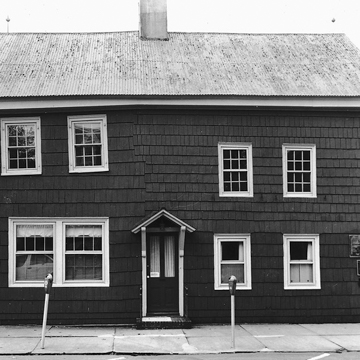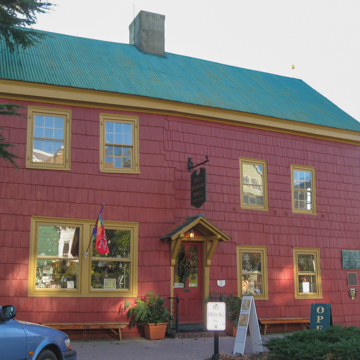The date of “Delaware's Oldest House” continues to be debated. A study by the Center for Historic Architecture and Design (CHAD) at the University of Delaware (1998) argues that it is unlikely to predate 1685, when Phillip Russell got a license to operate a public house on the corner, and that it might be as late as 1710. This conflicts with the much-cited results of dendrochronology in the 1980s that showed a date of 1665, but the CHAD authors answer that the building's style surely belongs to a later decade and that the wood might have been curing. Whatever its date, the original section is one-and-a-half stories and 20 × 16 feet in area with a lean-to attached; a corner fireplace (removed by 1800) stood at left in the front room, with the door at right. H-bent construction recalls Dutch practice. Strikingly, all the joists are chamfered (with lambs-tongue stops) along with the studs and window and door jambs. Ryves Holt, captain and lawyer, occupied the house starting in 1723. Later additions resulted in unevenly grouped windows. It has been owned by the local Episcopal church since 1981 and lately has been leased to Lewes Historical Society. Delaware is notably lacking in seventeenth-century survivals, making this one exceedingly valuable (although Walnut Landing, near Seaford, is c. 1700). Curiously, it is of that most perishable of materials, wood. In all of Virginia, by comparison, only one wooden house of pre-1700 remains (Williamsburg's Nelson-Galt House, dated to 1695 by dendrochronology).
You are here
Ryves Holt House
If SAH Archipedia has been useful to you, please consider supporting it.
SAH Archipedia tells the story of the United States through its buildings, landscapes, and cities. This freely available resource empowers the public with authoritative knowledge that deepens their understanding and appreciation of the built environment. But the Society of Architectural Historians, which created SAH Archipedia with University of Virginia Press, needs your support to maintain the high-caliber research, writing, photography, cartography, editing, design, and programming that make SAH Archipedia a trusted online resource available to all who value the history of place, heritage tourism, and learning.














